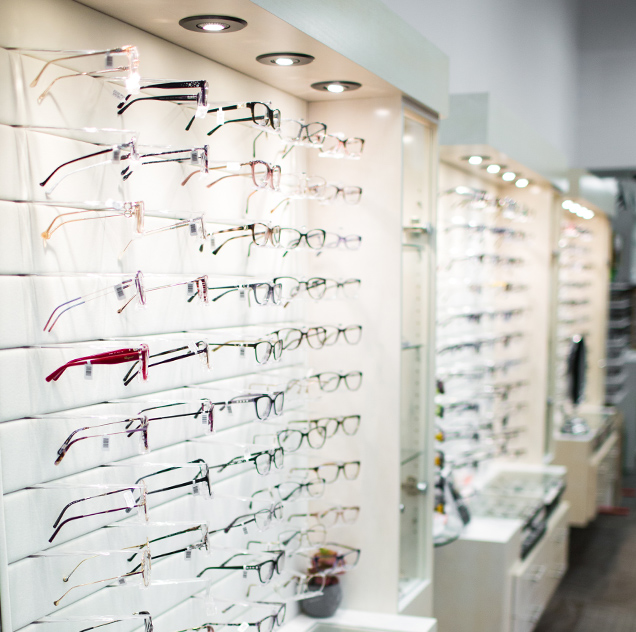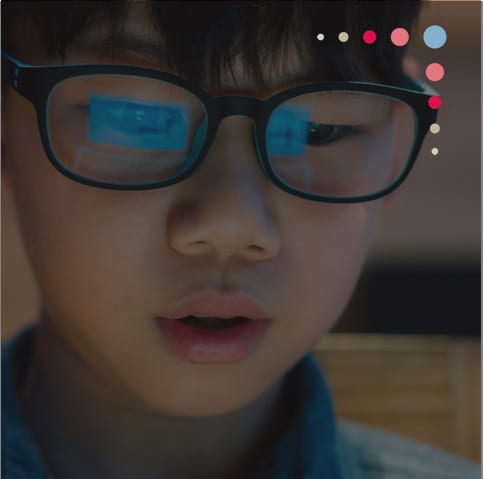
- Winnipeg, MB
- 204-582-2308

Eye Disease Diagnosis & Management in Winnipeg
Book Appointment
Your Eye Health Is Our Focus
At Henderson Vision Centre, we help diagnose and manage numerous eye diseases. The diseases listed below are some of the most common conditions we handle.
If you are worried about an eye disease that is not listed on this page, please contact our office with an inquiry and let one of our qualified team members provide additional details.
Glaucoma
Diagnosing Glaucoma
We use a comprehensive eye exam to diagnose glaucoma. During the exam, we perform the following tests:
- Visual acuity test: this test measures your vision quality at a distance.
- Visual field test: this test measures your peripheral vision. Since glaucoma can cause tunnel vision, this test is often an effective way to detect the disease.
- Tonometry: this test measures eye pressure, which can be a useful indicator of whether glaucoma is present.
- Optical coherence tomography (OCT imaging): OCT imaging measures and displays the structures inside of the eye, including the optic nerve.
Managing Glaucoma
Glaucoma cannot be cured, though in most cases it can be managed. Managing glaucoma requires an ongoing partnership between doctor and patient. We prescribe medications and a treatment plan, following up with regular exams to make sure you are following our recommendations effectively.
Some glaucoma medications can cause discomfort, but it is vital that you consult with us before discontinuing their use. Most treatment regimens for glaucoma are only effective for those who follow them carefully.
Cataracts
Diagnosing Cataracts
Comprehensive eye exams are the best way to diagnose cataracts. During the eye exam, we can detect cataracts with the following tests:
- Visual acuity test: this test measures your vision quality at a distance.
- Dilated eye exam: we use special eye drops to dilate your pupils, making it easier to take detailed images of your eye and its structures
- Biomicroscope test: this test allows optometrists to observe cataracts in greater detail
Treating Cataracts
In cataract-removal surgery, we replace your eye’s natural lens with a plastic intraocular lens (IOL). The IOL takes over all functions of the old lens and cannot be seen or felt after the procedure.
There are several types of cataract-removal surgery, but they all follow the same general process:
- We use a local anesthetic to numb your eye and the surrounding tissues.
- We prep the lens for removal, either by breaking it into small pieces via ultrasound or preparing to take it out in one full piece.
- We insert the IOL in place of the natural lens.
- We observe you for a few hours and then send you home to recover. Note that you will not be able to drive immediately after the surgery and will require a safe way to get home.
Age-Related Macular Degeneration (AMD)
Age-related macular degeneration (AMD) commonly affects those over the age of 60. It occurs when the central portion of your retina (known as the macula) begins to break down.
Diagnosing AMD
AMD comes in 2 forms: wet (neovascular) or dry (non-neovascular). The term neovascular refers to the unwanted growth of new blood vessels in the macula.
- Dry macular degeneration: this is the early stage of the disease, which may cause gradual central vision loss. It is characterized by yellowish spots collecting in and around the macula.
- Wet macular degeneration: this is the advanced form of AMD, occurring when dry macular degeneration is left untreated. New blood vessels grow beneath the retina and leak blood, causing permanent and irreversible damage to retinal cells that results in blind spots.
Managing AMD
There is no cure for AMD. However, some treatments can delay its progression and even improve vision when implemented early.
Nutritional changes can help delay the onset of wet AMD when it is still in the dry stage. Most treatments for wet AMD use injections to prevent the growth of abnormal blood vessels.
Regular maintenance is the best way to prevent AMD or slow down its symptoms. If you are over 45 years old, we recommend scheduling complete eye exams with us at least once every 2 years. If you are already diagnosed with AMD, you should monitor your vision daily and notify us of any changes you experience as soon as possible.
Where Can You Find Us?
You can find us in the River East Plaza, between Safeway and Booster Juice, and across from Tim Hortons. We have plenty of parking available on-site.

Our Address
Unit 1B – 1439 Henderson HwyWinnipeg, MB R2G 1N3
Hours of Operation
*Please note we are CLOSED on Saturdays of long weekends and for the months of July and August.
Our Services
Our Brands








Testimonials
“Just had the first eye exam for my daughter with Dr. Chow. My daughter really does not like doctors… but Dr. Chow was perfect she did the exam flawlessly and handled my daughter’s objections really well. ZERO stress. Now my daughter is excited to come back for her next eye exam in a year. Thank you also to Dr. Mestito-Dao super nice and super accommodating! Not to mention the staff, pro’s at what they do. Thank you and nicely done HVC!”
Ronald S.
“I had a very good experience with this clinic. The reception staff were warm, and efficient. My insurance coverage was handling very well. The pre-exam procedures were done well, by staff that were well versed in doing them. The Optometrist (Dr Zimmer), was excellent to deal with and very thorough. The office had a pleasant ambiance, and I left my appointment with a very “good feeling” about the whole experience. I will be booking my appointments with this clinic again.”
Mark Z.
“Every time I go to the H.V.C. I’m very pleased with Dr. Mundle & his staff’s thorough eye examination. They always take their time to explain & answer any questions I have regarding their tests & procedures.”
Alex N.
“Everyone was very friendly. They went over and above to explain everything to me. Helped me pick out new glasses which I’m obsessed with. When I went back in to pick them up the girl was so excited to help me and I left feeling so confident.”
Jess D.
“The staff are so friendly and it’s a very welcoming place. I see Dr. Mestito-Dao and I always feel like she listens to me and offers great feedback & advice. The exams are thorough so I also feel reassured that I’m in good hands and have had a comprehensive appointment. I would recommend Henderson Vision Centre to anyone.”
Shauna A.
Our Blog
What is a Diabetic Eye Exam?
Eye Diseases Diagnosis & ManagementEye ExamsWhat is a Diabetic Eye Exam?
Eye Diseases Diagnosis & ManagementEye ExamsDiabetes can have a significant impact on various parts of your body, including your eyes. People with diabetes need regular eye exams to detect complications […]
Diabetes can have a significant impact on various parts of your body, including your eyes. People with diabetes need regular eye exams to detect complications […]
When Should Your Child Have Their First Eye Exam?
Children’s Eye CareWhen Should Your Child Have Their First Eye Exam?
Children’s Eye CareVision care is a crucial aspect of overall health, especially in the early years of development. It’s during these formative years that children learn and […]
Vision care is a crucial aspect of overall health, especially in the early years of development. It’s during these formative years that children learn and […]

What Causes Astigmatism to Worsen?
Eye Diseases Diagnosis & ManagementEye ExamsWhat Causes Astigmatism to Worsen?
Eye Diseases Diagnosis & ManagementEye ExamsLike other refractive errors, astigmatism can worsen over time due to factors such as age, eye injuries, or ocular conditions like Keratoconus. […]

Like other refractive errors, astigmatism can worsen over time due to factors such as age, eye injuries, or ocular conditions like Keratoconus. […]





